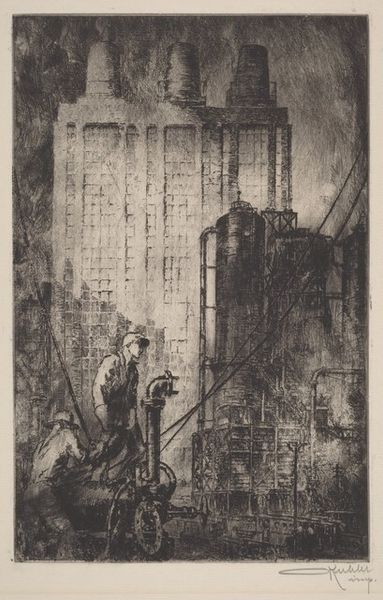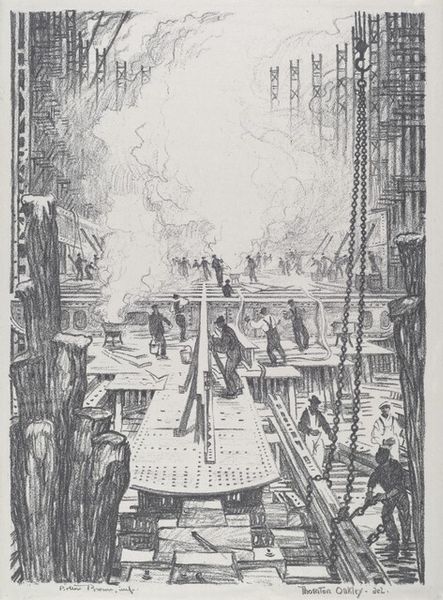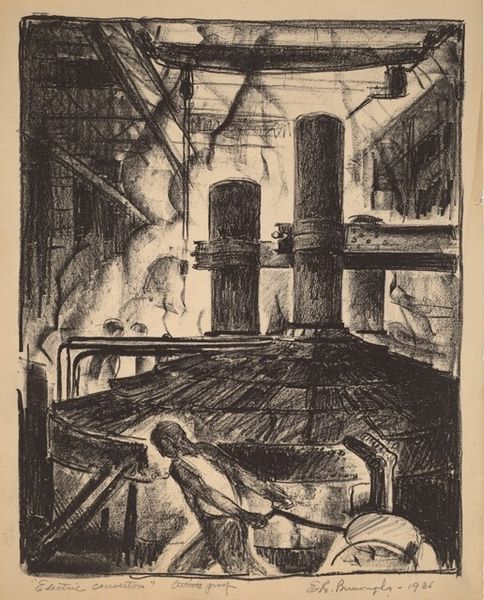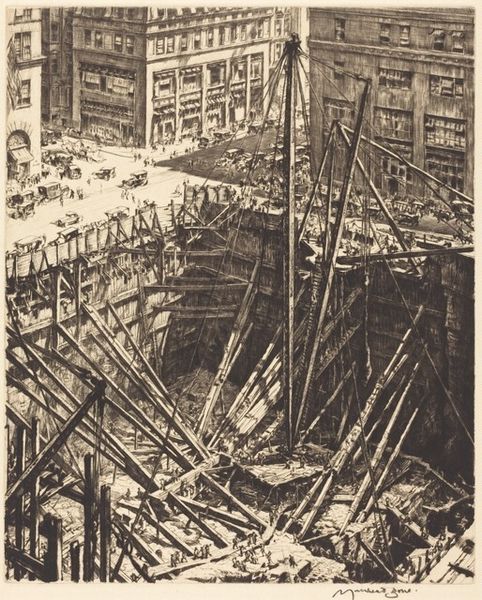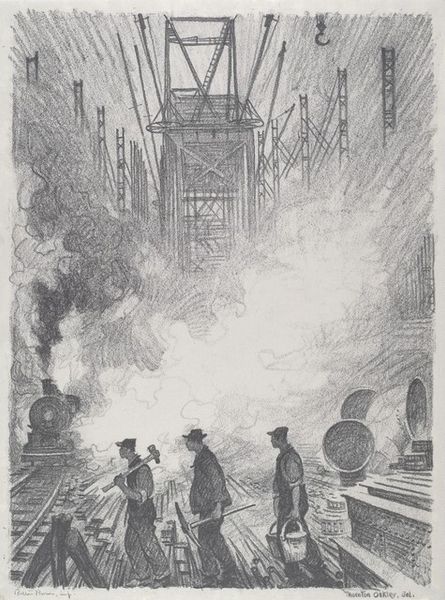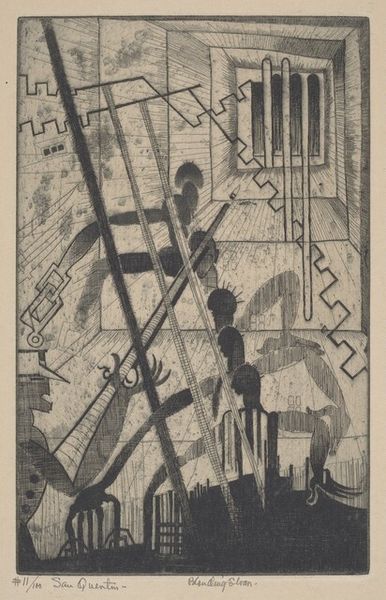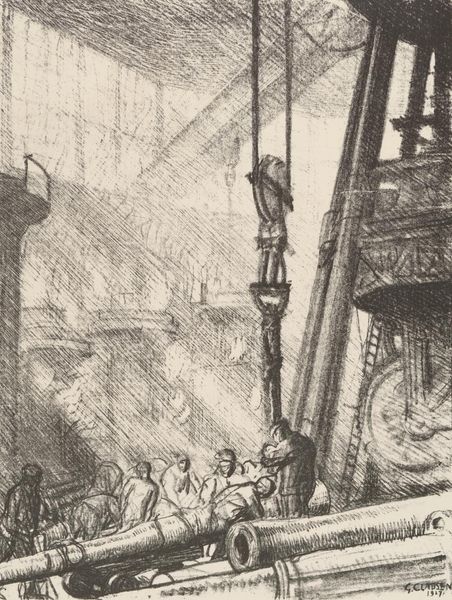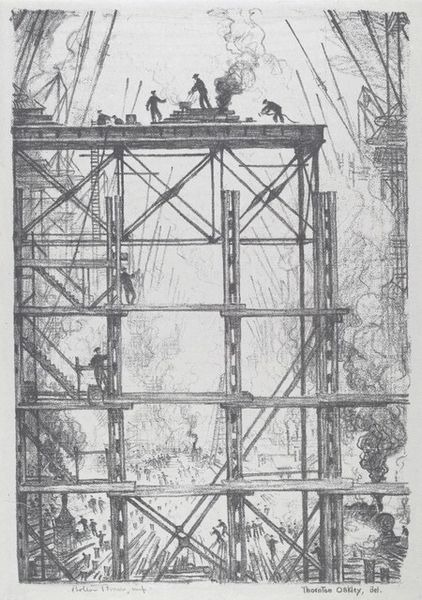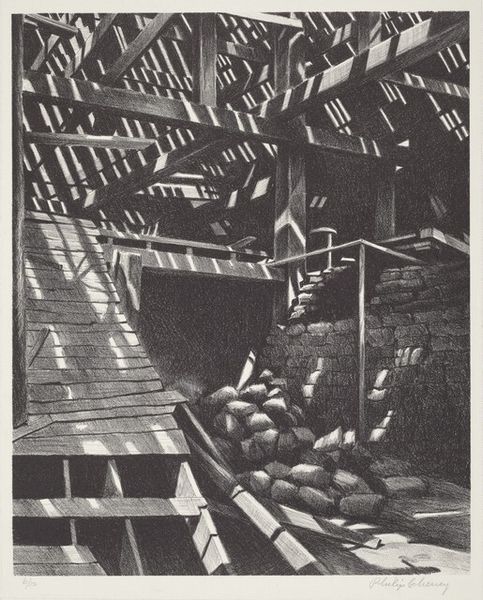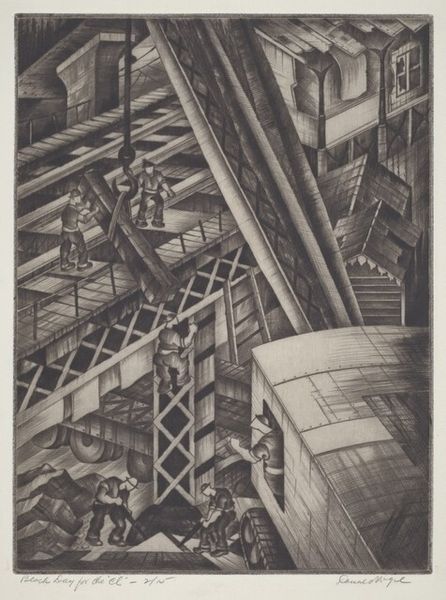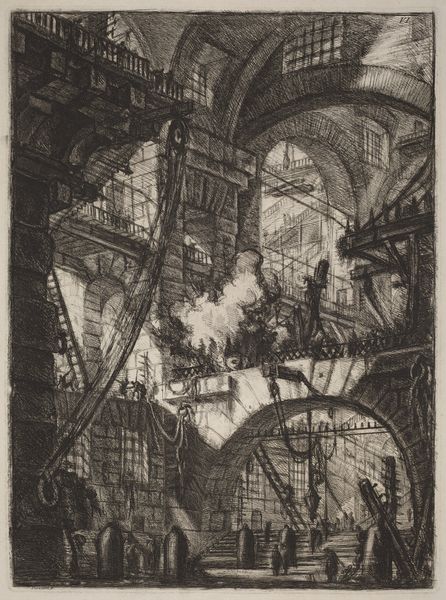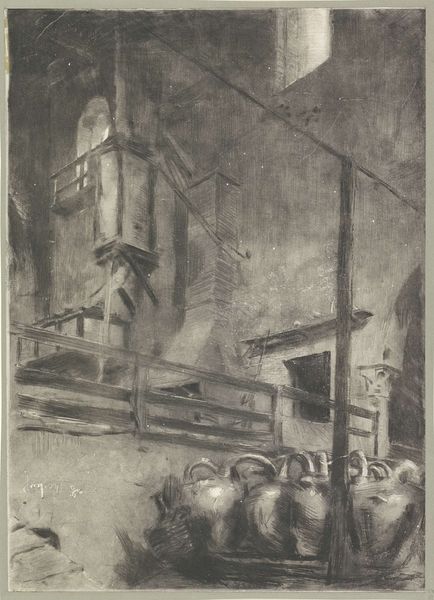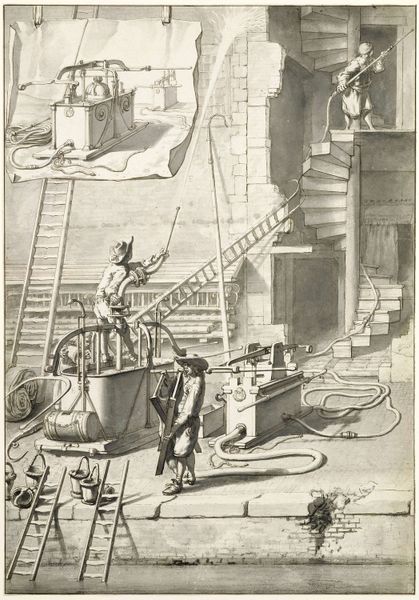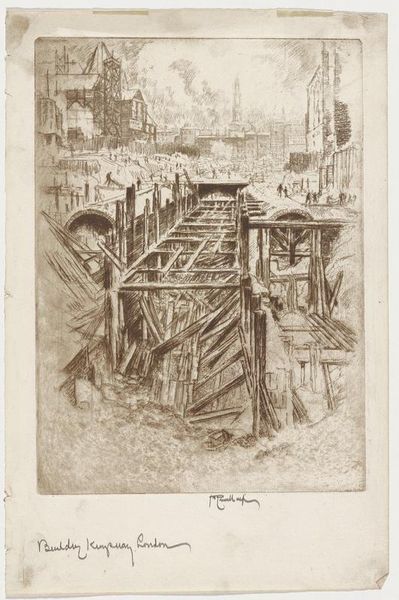
drawing, print, graphite
drawing
landscape
graphite
realism
Dimensions: image: 545 x 360 mm sheet: 568 x 383 mm
Copyright: National Gallery of Art: CC0 1.0
Curator: Alright, let’s dive into this incredible graphite drawing, "Hog Island. Ribs of a Beginning Ship," created around 1918 by Thornton Oakley. I'm just drawn to the immense scale captured on paper. What's your initial take? Editor: It’s a forest of girders. There’s a real feeling of early industrial ambition—and yet, there's a fragility suggested by the medium. It’s like a fleeting dream, ambitious and immense, but also kind of delicate. The whole image carries an atmospheric depth, an in-between moment of potential. Curator: Absolutely, there is that fascinating contrast. This was produced during World War I, and Hog Island was the largest shipyard in the world at the time, built to produce cargo ships for the war effort. It feels almost aspirational, that we're building this powerful image, even if with delicate graphite. It captures both that wartime urgency and a perhaps naive belief in progress. Editor: Graphite is so interesting, symbolically. On one hand, you have the everyday material of the pencil, the tool for planning, but on the other it's used here to depict something massive and powerful. I wonder if Oakley wanted to suggest something of that power behind the plan? There is something very graphic about that as a choice of material for me, it almost carries more weight than something more immediate, like charcoal. Curator: You hit on something really key. Oakley wasn’t just documenting, he was making a statement. There is that feeling that something great is being built, a machine aesthetic, very precise. The contrast in scales also feels key - these tiny, ant-like workers crawling over these giant metal bones. It gives a great feeling of energy and motion. It’s this incredibly complex visual metaphor for industry, warfare, and human endeavor. Editor: I completely agree, those workers feel symbolic. It is an era of hope mingled with an awareness of the human cost that always seems to hang in the smoke. The ships will rise but so will smoke, ash...a sense of human labor in this age of technology. It captures a transformative moment—that sense of the birth of the modern age amidst so much chaos, a phoenix made of steel. Curator: Well said! A perfect closing note on an image that resonates with the echoes of ambition, labor, and a changing world.
Comments
No comments
Be the first to comment and join the conversation on the ultimate creative platform.
